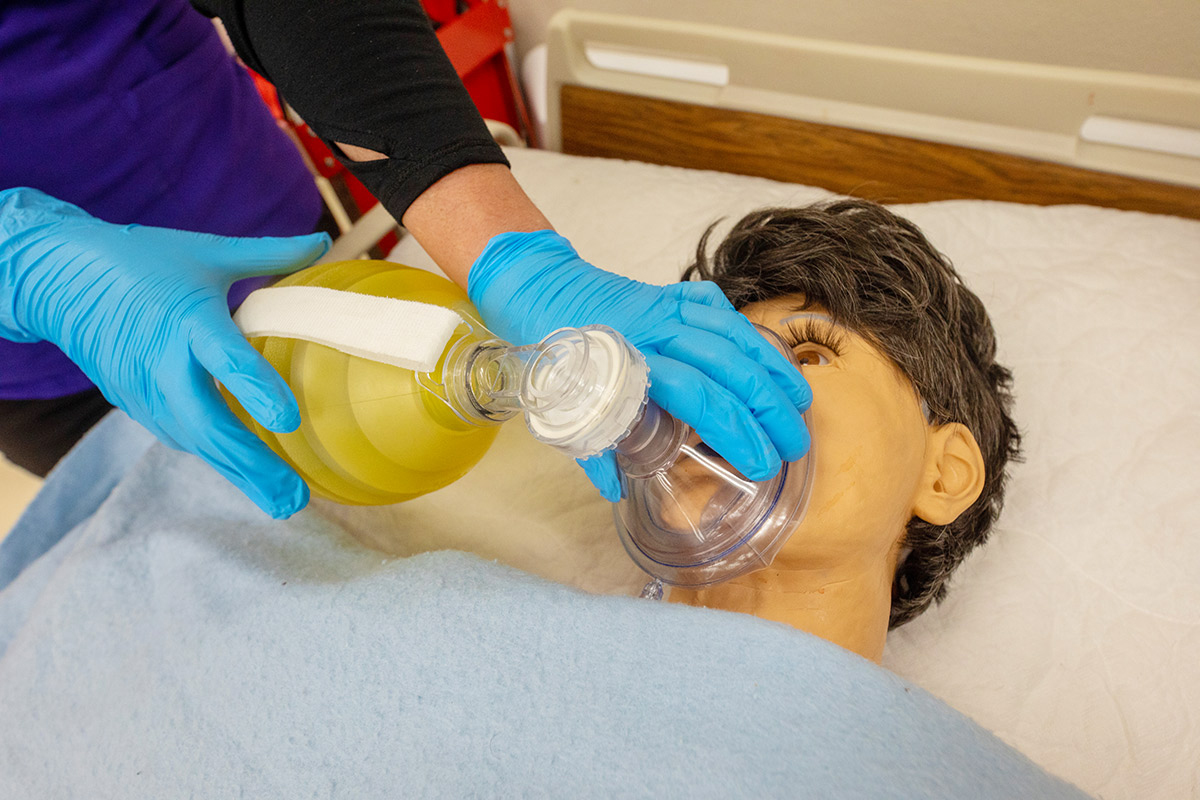
Simulation Center
Welcome to the San Juan College Health Sciences Simulation Center!
We are located in the Health Sciences Building across from the Deans office suit. Our hours are Monday through Friday 8am-5pm, nights and weekends by appointment. The center is available to all programs at San Juan College, and we also allow tours and space can be rented for training.
The mission of Health Sciences Simulation Center is to improve the quality of patient care by enhancing clinical competencies and professional role development for integration into actual clinical practice.
Goals and Objectives:
- Enhance and promote quality patient care through the use of simulation. Simulation is proven to help develop critical thinking skills, build sound clinical judgment, and increase clinical skills competencies.
- Organize, develop, and manage continuing education activities such as seminars, workshops, and programs to improve and/or enhance the skills competencies of the participants.
- Encourage research and innovative strategies to improve the delivery of clinical education and training to the participants.
- The primary objectives are to improve patient safety, build teamwork and confidence, improve technical skills, and develop leadership skills in an interdisciplinary environment.
Facilities
- Emergency room (ER), Room 3213
- Intensive care unit (ICU), Room 3221
- Nurses Station, Room 3215
- Labor and Delivery unit, Room 3211
- Simulation control room where instructors observe students in simulations, Room 3219
- Adult, pediatric and neonatal patient simulators
Simulated patient care scenarios are captured or observed and recorded by cameras and microphones in all simulation rooms. The simulation control room is equipped with ten (10) monitors. Simulators can be controlled from the simulation control room for one-on-one teaching.
Simulated areas such as the ER and ICU are equipped with connections for medical-grade compressed gases (oxygen, vacuum, air) and with centrally-supplied compressed gases for patient simulators (air, oxygen, carbon dioxide, and nitrogen). Zone valves near each room allow simulated loss of oxygen, air, or vacuum during patient care.
Debriefing before and after a simulated scenario is done in a separate classroom, which is equipped with audiovisual equipment.

